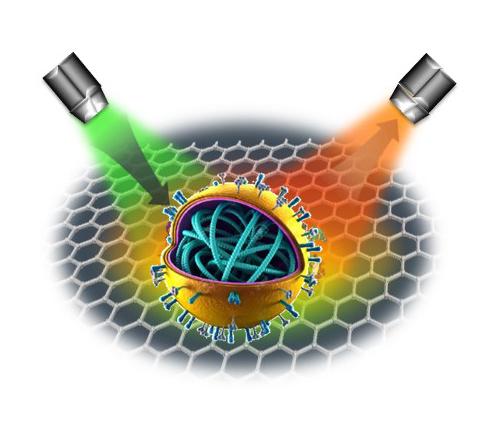
Credit: Terrones lab/Penn State
The evolution of viruses will be the focus of a five-year $3.7 million dollar grant from the National Science Foundation’s new program on convergence research, to an interdisciplinary team led by Penn State. The grant is in two phases, depending on successful completion of phase one milestones.
This convergence grant brings together disciplines that have not worked together before to solve problems of high complexity with societal impact. Penn State is one of 11 universites to receive a convergence grant.
“Convergence is not the same as multidisciplinary research,” according to principal researcher Mauricio Terrones, Verne M. Willaman Professor of Physics. “Convergence is the deep dive into establishing communication pathways and new protocols that results in the emergence of a new field. In our project we have a virologist, an engineer, a physicist/chemist, a spectroscopist, and a data scientist.”
The team is trying to work on the very complicated problem of the evolution of viruses. They plan to do this by effectively capturing the viruses and using a laser to record the vibrations of atoms and molecules that make up the surface of the viruses. As a virus mutates, its surface changes and the frequency of the vibrations change, thus leading to the evolution of new strains of contagious viruses.
Each year, one in five people around the globe are infected with epidemic strains of influenza, leading to half a million deaths. Early detection of new strains that can cause a pandemic is crucial, but current methodology requires extensive laboratory equipment housed in specialized centers with methods that are slow and costly. The Penn State-New York University team proposes to develop a handheld device that will quickly and cheaply detect evolving viruses in the field.
Because the changes in the virus surface are minute, the team will require data science and machine learning to create a database to differentiate between emerging strains.
“Our virologist, Elodie Ghedin from NYU, is a leading expert on influenza and virus evolution,” said Terrones. “She will provide us with the viruses. She can track down viruses from the 1800s to now and see how the virus mutates over time.
“Five years from now we hope to create a center for viruses in plants, animals and humans,” Terrones added.
In addition to Terrones and Ghedin, other members of the team include Sharon Huang, associate professor of information science and technology, Ying-Tin Yeh assistant research professor of physics, and Shenxi Huang, assistant professor of electrical engineering and biomedical engineering all at Penn State.
###
Media Contact
A’ndrea Elyse Messer
[email protected]
814-865-5689




